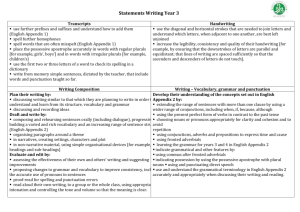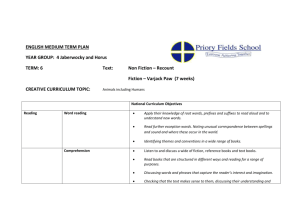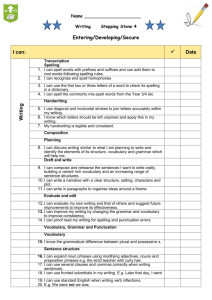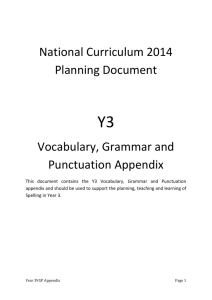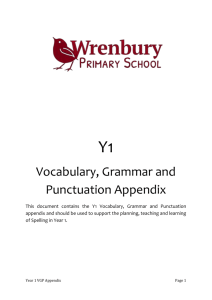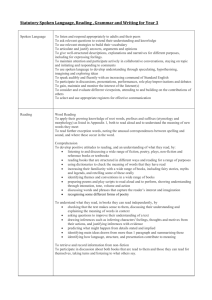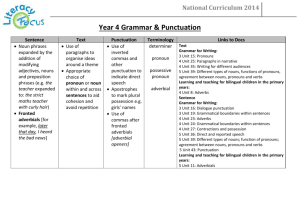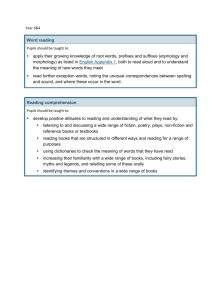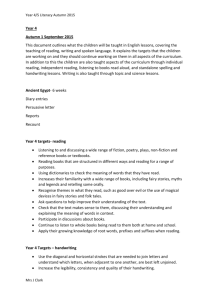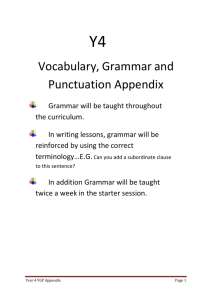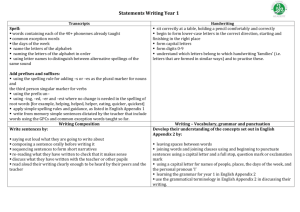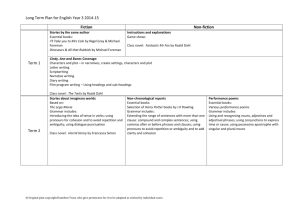Year 4
advertisement
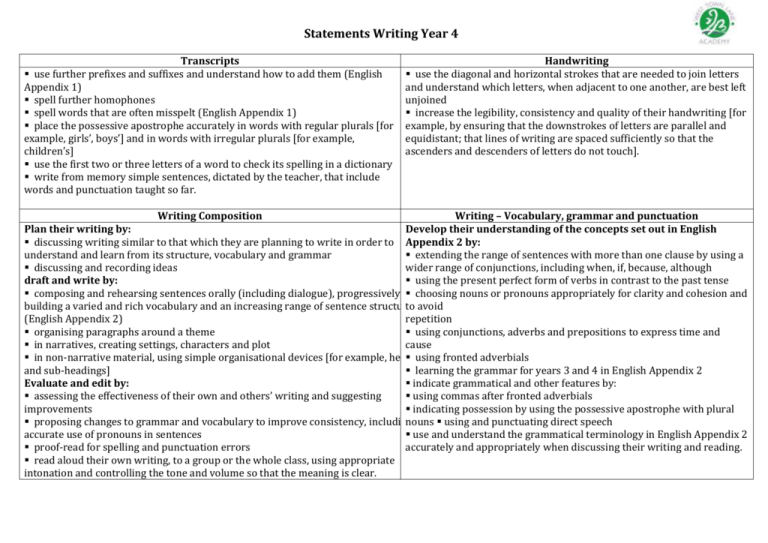
Statements Writing Year 4 Transcripts use further prefixes and suffixes and understand how to add them (English Appendix 1) spell further homophones spell words that are often misspelt (English Appendix 1) place the possessive apostrophe accurately in words with regular plurals [for example, girls’, boys’] and in words with irregular plurals [for example, children’s] use the first two or three letters of a word to check its spelling in a dictionary write from memory simple sentences, dictated by the teacher, that include words and punctuation taught so far. Handwriting use the diagonal and horizontal strokes that are needed to join letters and understand which letters, when adjacent to one another, are best left unjoined increase the legibility, consistency and quality of their handwriting [for example, by ensuring that the downstrokes of letters are parallel and equidistant; that lines of writing are spaced sufficiently so that the ascenders and descenders of letters do not touch]. Writing Composition Writing – Vocabulary, grammar and punctuation Plan their writing by: Develop their understanding of the concepts set out in English discussing writing similar to that which they are planning to write in order to Appendix 2 by: understand and learn from its structure, vocabulary and grammar extending the range of sentences with more than one clause by using a discussing and recording ideas wider range of conjunctions, including when, if, because, although draft and write by: using the present perfect form of verbs in contrast to the past tense composing and rehearsing sentences orally (including dialogue), progressively choosing nouns or pronouns appropriately for clarity and cohesion and building a varied and rich vocabulary and an increasing range of sentence structures to avoid (English Appendix 2) repetition organising paragraphs around a theme using conjunctions, adverbs and prepositions to express time and in narratives, creating settings, characters and plot cause in non-narrative material, using simple organisational devices [for example, headings using fronted adverbials and sub-headings] learning the grammar for years 3 and 4 in English Appendix 2 Evaluate and edit by: indicate grammatical and other features by: assessing the effectiveness of their own and others’ writing and suggesting using commas after fronted adverbials improvements indicating possession by using the possessive apostrophe with plural proposing changes to grammar and vocabulary to improve consistency, including nouns the using and punctuating direct speech accurate use of pronouns in sentences use and understand the grammatical terminology in English Appendix 2 proof-read for spelling and punctuation errors accurately and appropriately when discussing their writing and reading. read aloud their own writing, to a group or the whole class, using appropriate intonation and controlling the tone and volume so that the meaning is clear. Appendix 2 details Year 4 Vocabulary, grammar and punctuation Word Sentence Text Punctuation The grammatical difference between plural and possessive – s Standard English forms for verb inflections instead of local spoken forms [for example, we were instead of we was, or I did instead of I done] Noun phrases expanded by the addition of modifying adjectives, nouns and preposition phrases (e.g. the teacher expanded to: the strict maths teacher with curly hair) Fronted adverbials [for example, Later that day, I heard the bad news.] Use of paragraphs to organise ideas around a theme Appropriate choice of pronoun or noun within and across sentences to aid cohesion and avoid repetition Use of inverted commas and other punctuation to indicate direct speech [for example, a comma after the reporting clause; end punctuation within inverted commas: The conductor shouted, “Sit down!”] Apostrophes to mark plural possession [for example, the girl’s name, the girls’ names] Use of commas after fronted adverbials Terminology determiner pronoun, possessive pronoun adverbial
